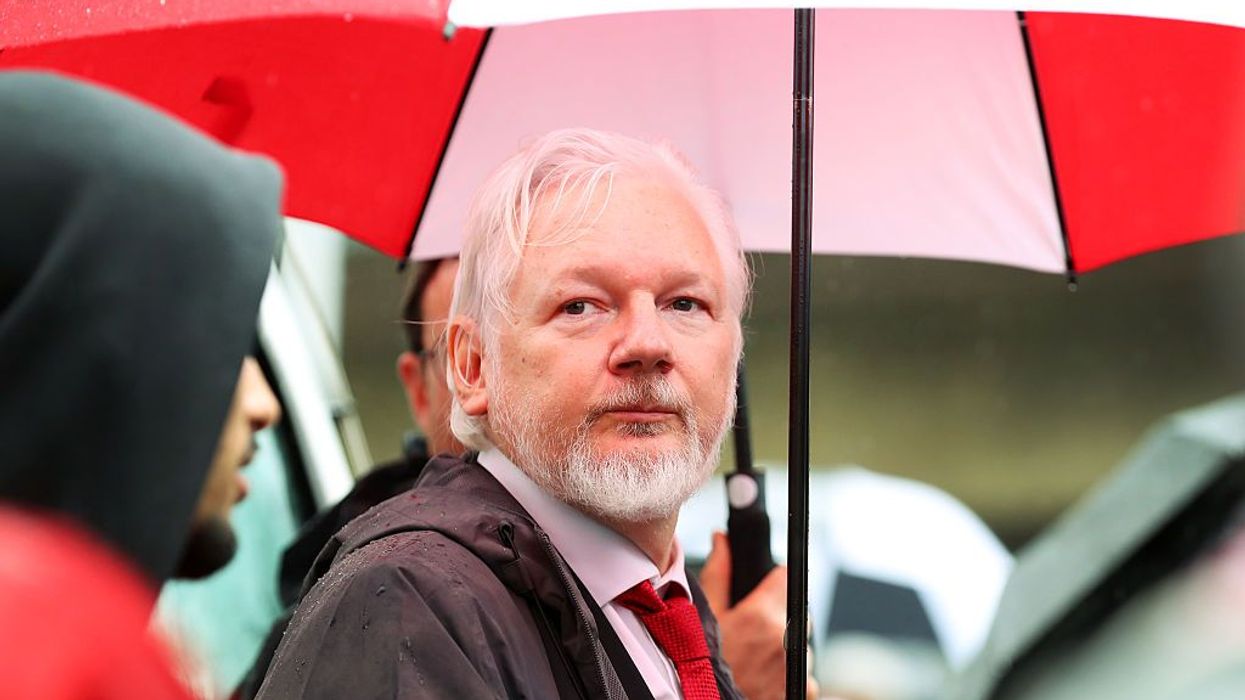Assange Sues Nobel Foundation to Stop War-Promoting Machado From Receiving Peace Prize Cash
"Alfred Nobel's endowment for peace cannot be spent on the promotion of war."
WikiLeaks founder Julian Assange on Wednesday filed a complaint against the Nobel Foundation to stop its planned payouts to Venezuelan opposition leader and 2025 Nobel Peace Prize winner María Corina Machado, who has backed US President Donald Trump's campaign of military aggression against her own country.
According to a press release that WikiLeaks posted to X, Assange's lawsuit seeks to block Machado from obtaining over USD $1 million she's due to receive from the Nobel Foundation as winner of this year's Peace Prize.
The complaint notes that Alfred Nobel's will states that the Peace Prize named after him should only be awarded to those who have "conferred the greatest benefit to humankind” by doing “the most or the best work for fraternity between nations, for the abolition or reduction of standing armies, and for the holding and promotion of peace congresses."
In an interview that aired on Sunday on CBS News’ “Face the Nation,” Machado praised Trump’s policies of tightening economic sanctions and seizing Venezuelan oil tankers, acts of aggression that appear to go against Nobel's stated declaration that the Peace Prize winner must promote "fraternity between nations."
“Look, I absolutely support President Trump’s strategy, and we, the Venezuelan people, are very grateful to him and to his administration, because I believe he is a champion of freedom in this hemisphere,” Machado told CBS News.
Trump’s campaign against Venezuela has not only included sanctions and the seizing of an oil tanker, but a series of bombings of purported drug trafficking vessels that many legal experts consider to be acts of murder.
In his complaint, Assange claims that Machado's gushing praise of Trump in the wake of his illegal boat-bombing campaign is enough to justify the Nobel Foundation freezing its disbursements to the Venezuelan politician.
"Alfred Nobel's endowment for peace cannot be spent on the promotion of war," Assange states, adding that "Machado has continued to incite the Trump Administration to pursue its escalatory path" against her own country.
The complaint also argues that there's a risk that funds awarded to Machado will be "diverted from their charitable purpose to facilitate aggression, crimes against humanity, and war crimes."
Were this to happen, the complaint alleges, it would violate Sweden's obligations under Article 25(3)(c) of the Rome Statute, which states that anyone who "aids, abets, or otherwise assists" in the commission of a war crime shall be subject to prosecution under the International Criminal Court.
Trump in recent days has ramped up his aggressive actions against Venezuela, and on Tuesday night he announced a "total and complete blockade" of all "sanctioned oil tankers" seeking to enter and leave the country.
“Venezuela is completely surrounded by the largest Armada ever assembled in the History of South America,” Trump wrote in a Truth Social post. “It will only get bigger, and the shock to them will be like nothing they have ever seen before.”


